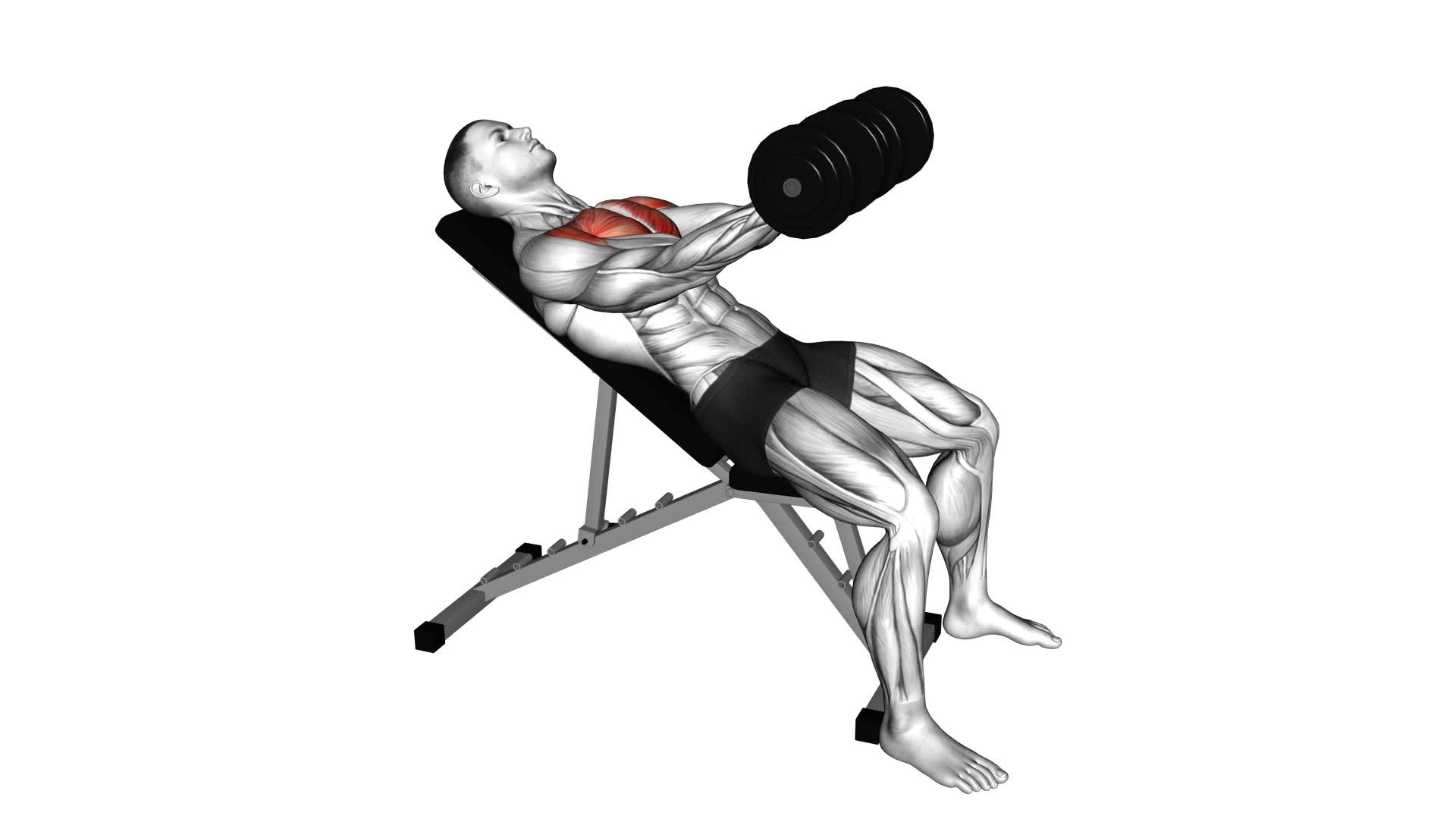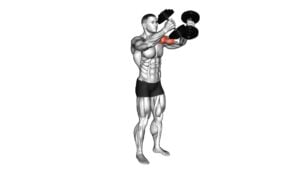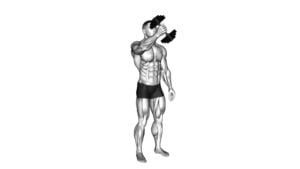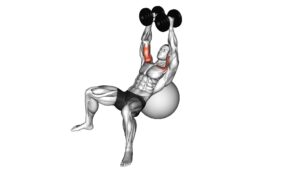Dumbbell Incline Low Fly – Video Exercise Guide & Tips

Looking to tone your chest muscles?
Watch This Exercise Video
In this video exercise guide, you'll learn about the Dumbbell Incline Low Fly. This exercise targets your pectoral muscles, helping you achieve a sculpted upper body.
Watch the video to see the proper form and technique for maximum effectiveness.
Whether you're a beginner or an advanced fitness enthusiast, we've got variations and modifications to suit your level.
Get ready to take your chest workout to the next level with the Dumbbell Incline Low Fly!
Key Takeaways
- The Dumbbell Incline Low Fly targets chest muscles for a sculpted upper body.
- It engages shoulders and triceps for overall upper body strength.
- The exercise offers a greater range of motion compared to other chest exercises.
- It targets upper chest muscles for a well-rounded appearance.
Benefits of the Dumbbell Incline Low Fly
The dumbbell incline low fly offers a range of benefits for your upper body strength and stability. This exercise primarily targets your chest muscles, making it a great addition to your chest workout routine. By performing the dumbbell incline low fly, you can effectively strengthen and tone your pectoral muscles. This exercise also engages your shoulders and triceps, helping to improve overall upper body strength.
One of the main benefits of the dumbbell incline low fly is that it allows for a greater range of motion compared to other chest exercises. This increased range of motion helps to fully stretch and contract your chest muscles, leading to greater muscle activation and growth. Additionally, the incline position targets the upper chest muscles, helping to create a well-rounded and balanced chest appearance.
Another advantage of the dumbbell incline low fly is that it requires stability and control throughout the movement. This helps to improve your core strength and stability, as well as your overall balance. It's important to maintain proper form and control during the exercise to prevent any unnecessary strain or injury.
Incorporating the dumbbell incline low fly into your chest workout routine can provide significant benefits for your upper body strength and stability. It's an effective exercise for targeting and strengthening your chest muscles, as well as engaging your shoulders and triceps. Remember to start with a weight that allows you to maintain proper form and gradually increase the weight as you become more comfortable and stronger.
Proper Form and Technique for the Exercise
To perform the dumbbell incline low fly with proper form and technique, you need to focus on maintaining control and stability throughout the movement. This exercise primarily targets the chest muscles, specifically the pectoralis major and minor. However, it also engages the shoulders and triceps to a lesser extent.
One common mistake to avoid is using excessive weight. It's important to choose a weight that allows you to maintain proper form throughout the exercise. Using too heavy of a weight can compromise your technique and increase the risk of injury.
To begin the exercise, lie back on an incline bench with a dumbbell in each hand. Start with your arms extended straight up above your chest, palms facing each other. Lower the dumbbells out to the sides in a wide arc, keeping a slight bend in your elbows. Your arms should be parallel to the floor at the bottom of the movement. Pause for a moment, then return to the starting position by squeezing your chest muscles.
Remember to keep your core engaged and your back flat against the bench throughout the exercise. Focus on a controlled and deliberate movement, rather than rushing through the repetitions. By maintaining proper form and technique, you'll maximize muscle activation and minimize the risk of injury.
Equipment and Setup for the Dumbbell Incline Low Fly
For the dumbbell incline low fly, you'll need an incline bench and a pair of dumbbells. The incline bench allows you to target your upper chest muscles more effectively, while the dumbbells provide resistance to challenge your muscles. When selecting an incline bench, make sure it's sturdy and properly adjusted to the desired angle. The angle should be set at around 30-45 degrees, depending on your comfort level and fitness goals.
The dumbbells should be chosen according to your strength and fitness level, but a good starting point is to select a weight that allows you to perform the exercise with proper form and without straining. To set up for the dumbbell incline low fly, sit on the incline bench with your feet flat on the ground. Hold a dumbbell in each hand with your palms facing each other and extend your arms straight up over your chest. This is the starting position for the exercise.
Now that you know the equipment and setup for the dumbbell incline low fly, let's move on to discussing variations and modifications for different fitness levels.
Variations and Modifications for Different Fitness Levels
Try adjusting the incline bench and dumbbell weight to challenge yourself at different fitness levels. For beginners, scaling options can help make the exercise more manageable. If the weight is too heavy, start with lighter dumbbells or even use no weight at all. This allows you to focus on proper form and technique before gradually increasing the weight. Additionally, adjusting the incline bench to a lower angle can reduce the difficulty of the exercise. As you become more comfortable and stronger, gradually increase the weight and raise the incline to a higher angle to progress.
On the other hand, for advanced individuals looking for more intensity, there are modifications to increase the difficulty of the exercise. You can use heavier dumbbells or even resistance bands to add more resistance. Increasing the incline of the bench will also challenge your upper chest and shoulders even more. Another option is to perform the exercise with a slower tempo, focusing on the eccentric (lowering) phase to increase time under tension and muscle activation.
Remember to listen to your body and make adjustments as needed. The goal is to find a challenging yet manageable level that allows you to perform the exercise safely and effectively.
Tips for Getting the Most Out of the Dumbbell Incline Low Fly
Adjusting the incline bench and dumbbell weight can enhance your performance and results during the Dumbbell Incline Low Fly exercise. Here are some tips and techniques to help you get the most out of this exercise:
- Start with the right incline: Set the bench at a 30 to 45-degree angle to target your upper chest muscles effectively. Adjusting the incline can help you isolate and engage the muscles more efficiently.
- Choose the appropriate weight: Select dumbbells that challenge you but still allow for proper form. It's better to start with a lighter weight and gradually increase as you become comfortable with the exercise.
- Maintain proper form: Keep your back flat against the bench and your feet planted firmly on the ground. This will help stabilize your body and prevent any unnecessary strain or injury.
- Focus on controlled movements: Slowly lower the dumbbells to the sides of your chest while keeping your elbows slightly bent. Avoid swinging or using momentum to lift the weights, as this can reduce the effectiveness of the exercise.
- Squeeze your chest muscles: At the top of the movement, bring the dumbbells together and squeeze your chest muscles. This will further engage the muscles and maximize the benefits of the exercise.
Frequently Asked Questions
How Many Sets and Reps Should I Do for the Dumbbell Incline Low Fly?
To determine how many sets and reps you should do for the dumbbell incline low fly exercise, you need to consider your fitness goals and current strength level.
Generally, it's recommended to perform 3-4 sets of 8-12 reps for muscle hypertrophy and strength gains.
However, you can also vary the sets and reps depending on your preferences and training program.
Remember to start with lighter weights and gradually increase the intensity as you get stronger.
Can I Perform the Dumbbell Incline Low Fly With Resistance Bands Instead of Dumbbells?
Yes, you can perform the dumbbell incline low fly with resistance bands instead of dumbbells. Using resistance bands for this exercise can provide a different type of resistance and challenge for your chest muscles.
Resistance bands also allow for a greater range of motion and can help improve stability and muscle activation. Incorporating resistance bands into your chest exercises can add variety and help you target your muscles in a slightly different way.
Is It Necessary to Have an Incline Bench for the Dumbbell Incline Low Fly?
Yes, it's necessary to have an incline bench for the dumbbell incline low fly. Using an incline bench has several benefits for chest exercises. It increases the range of motion and activates the upper chest muscles more effectively.
For beginners, you can modify the dumbbell incline low fly by starting with lighter weights and focusing on proper form. Gradually increase the weight as you build strength and confidence.
Can I Incorporate the Dumbbell Incline Low Fly Into a Full-Body Workout Routine?
Incorporating the dumbbell incline low fly into a full-body workout routine can be beneficial for your chest and shoulder muscles. This exercise targets these muscle groups and helps improve their strength and definition.
What Are Some Alternative Exercises That Target the Same Muscles as the Dumbbell Incline Low Fly?
Looking for alternative exercises to target the same muscles as the dumbbell incline low fly?
There are a few options you can try. One is the dumbbell incline press, which also works your chest muscles.
Another option is the cable fly, where you use cables instead of dumbbells.
Both exercises provide similar benefits to the dumbbell incline low fly in terms of chest development.
Give them a try and see which one works best for you!
Conclusion
In conclusion, the dumbbell incline low fly is a beneficial exercise for targeting the chest muscles.
By maintaining proper form and technique, using the appropriate equipment and setup, and making variations to suit different fitness levels, you can maximize the effectiveness of this exercise.
Additionally, incorporating tips such as focusing on controlled movements and proper breathing can help you get the most out of your dumbbell incline low fly workout.

Author
Years ago, the spark of my life’s passion ignited in my mind the moment I stepped into the local gym for the first time. The inaugural bead of perspiration, the initial endeavor, the very first surge of endorphins, and a sense of pride that washed over me post-workout marked the beginning of my deep-seated interest in strength sports, fitness, and sports nutrition. This very curiosity blossomed rapidly into a profound fascination, propelling me to earn a Master’s degree in Physical Education from the Academy of Physical Education in Krakow, followed by a Sports Manager diploma from the Jagiellonian University. My journey of growth led me to gain more specialized qualifications, such as being a certified personal trainer with a focus on sports dietetics, a lifeguard, and an instructor for wellness and corrective gymnastics. Theoretical knowledge paired seamlessly with practical experience, reinforcing my belief that the transformation of individuals under my guidance was also a reflection of my personal growth. This belief holds true even today. Each day, I strive to push the boundaries and explore new realms. These realms gently elevate me to greater heights. The unique combination of passion for my field and the continuous quest for growth fuels my drive to break new ground.







